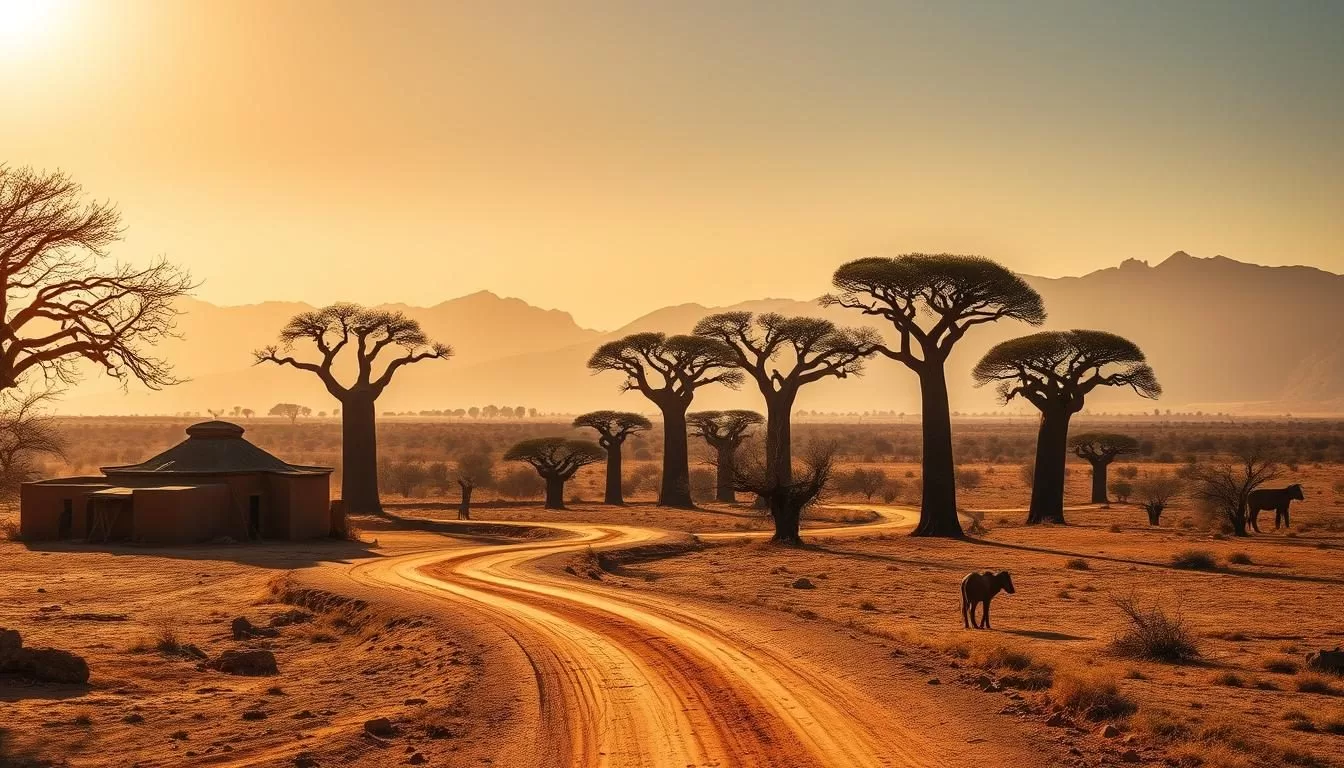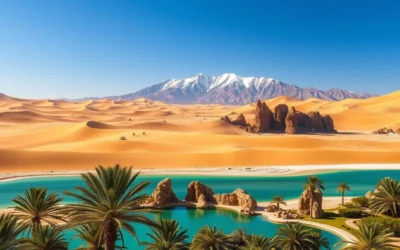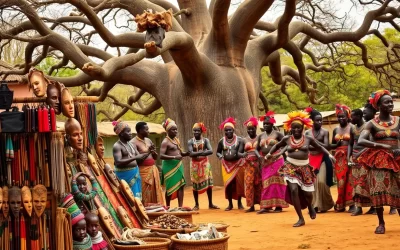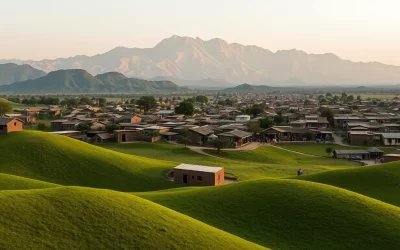✓ Accommodations✓ Flights✓ Rental Cars
Planning a trip to Niger can be a thrilling experience, but it requires careful consideration of the country’s unique climate patterns to ensure a comfortable and enjoyable experience.
Understanding the weather conditions is crucial when deciding the time to visit this West African destination. Niger’s climate varies significantly throughout the year, with distinct dry and wet seasons that impact travel conditions.
This comprehensive guide will help you identify the ideal time for your visit based on weather patterns, regional variations, and cultural events, ensuring your trip is well-planned and memorable.
Understanding Niger’s Unique Climate
Niger’s climate is a complex mix of desert and semi-arid conditions, shaped by its location in the Sahel region. This unique blend creates extreme variations in temperature and weather patterns across the country.
The Sahel and Desert Climate Zones
Niger’s climate is characterized by its position in the Sahel region, creating a unique blend of desert and semi-arid conditions. The northern regions are dominated by the Sahara Desert, experiencing extreme heat, while southern Niger falls within the Sahel zone, with distinct wet and dry seasons.
| Region | Climate Zone | Characteristics |
|---|---|---|
| Northern Niger | Sahara Desert | Extreme heat, arid conditions |
| Southern Niger | Sahel Zone | Distinct wet and dry seasons |
Temperature Extremes Throughout the Year
Temperature extremes are a defining feature of Niger’s climate. Summers can be brutally hot, with temperatures soaring above 50°C in central and southern regions. Winters are milder, offering a more pleasant experience for travelers. Understanding these variations is crucial for planning your trip.
Seasonal Overview: Dry vs. Wet Season
Niger’s climate is marked by two main seasons, each offering unique experiences for travelers. Understanding these seasons is key to planning a successful trip.
Dry Season: October to May
The dry season, spanning from October to May, is characterized by clear skies and minimal rainfall. During the peak months of December to February, temperatures are particularly pleasant, ranging from 15°C (59°F) at night to 30-35°C (86-95°F) during the day, making it an ideal time for outdoor activities and exploring Niger’s attractions. However, the later part of the dry season, from March to May, brings increasingly hot conditions, with temperatures often exceeding 40°C (104°F), which can be challenging for travel.
Wet Season: June to September
The wet season, from June to September, brings much-needed rainfall to Niger, transforming the landscape with bursts of greenery, especially in the southern regions. Although humidity levels rise significantly and sporadic heavy downpours can cause flooding, making some rural roads impassable, the wet season offers unique advantages. These include fewer tourists and the opportunity to witness the dramatic transformation of Niger’s typically arid environment.
| Season | Months | Characteristics |
|---|---|---|
| Dry Season | October to May | Clear skies, minimal rainfall, moderate to hot temperatures |
| Wet Season | June to September | Rainfall, high humidity, greenery, potential flooding |
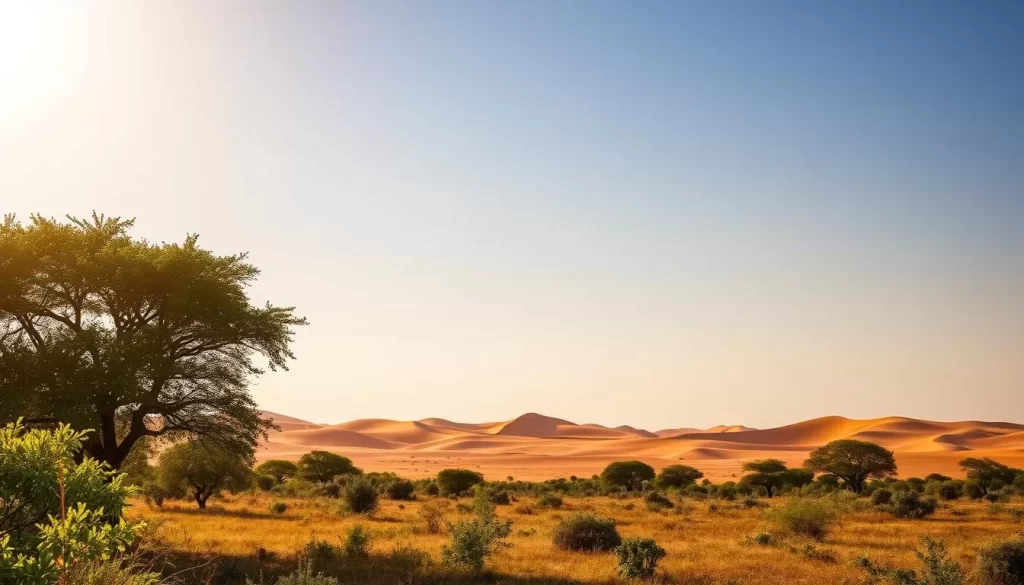
Niger: Best Months for a Weather-Savvy Trip
When planning your trip to Niger, timing is everything to ensure a comfortable and enjoyable experience. The country’s climate varies significantly throughout the year, making some periods more suitable for travel than others.
November to February: Prime Travel Time
The prime time to visit Niger is during the cooler dry season months from November to February. This period offers ideal conditions for exploring Niger’s diverse attractions, with daytime temperatures typically ranging from 25-30°C (77-86°F) and cool, pleasant evenings. It’s the best time to visit Niger for outdoor activities such as desert excursions, wildlife viewing in W National Park, and exploring historic sites without the discomfort of extreme heat.
- Comfortable temperatures for daytime exploration
- Pleasant evenings for cultural experiences
- Ideal conditions for desert excursions and wildlife viewing
Shoulder Seasons: October and March
If you’re looking for a compromise between comfortable temperatures and fewer tourists, consider visiting during the shoulder seasons of October and March. October marks the transition from the wet to the dry season, with decreasing rainfall and moderating temperatures, making it a great time to see Niger’s landscape at its most lush. March remains relatively comfortable in the northern regions but begins to heat up significantly in the south, offering a last window of opportunity for comfortable travel before the extreme heat sets in.
- October: Transition from wet to dry season with lush landscapes
- March: Comfortable in the north, heating up in the south
- A good time for those seeking fewer tourists
By choosing the right time for your trip, you can have a more enjoyable and comfortable experience in Niger. Whether you opt for the prime travel time or the shoulder seasons, understanding the climate will help you make the most of your travel experience.
Monthly Weather Breakdown in Niger
Understanding the monthly weather breakdown in Niger is crucial for planning a successful trip. The country’s climate varies significantly throughout the year, with different months offering unique conditions for travel and exploration.
January to March: Peak Dry Season
January is an ideal time to visit Niger, with daytime temperatures averaging 25-30°C (77-86°F) and cool nights. February continues this trend, with clear skies and comfortable temperatures, although the heat starts to increase in the southern regions by late February. March marks the transition toward hotter conditions, with temperatures climbing to 35-40°C (95-104°F) in many areas. The dry season makes it perfect for desert excursions and wildlife viewing.
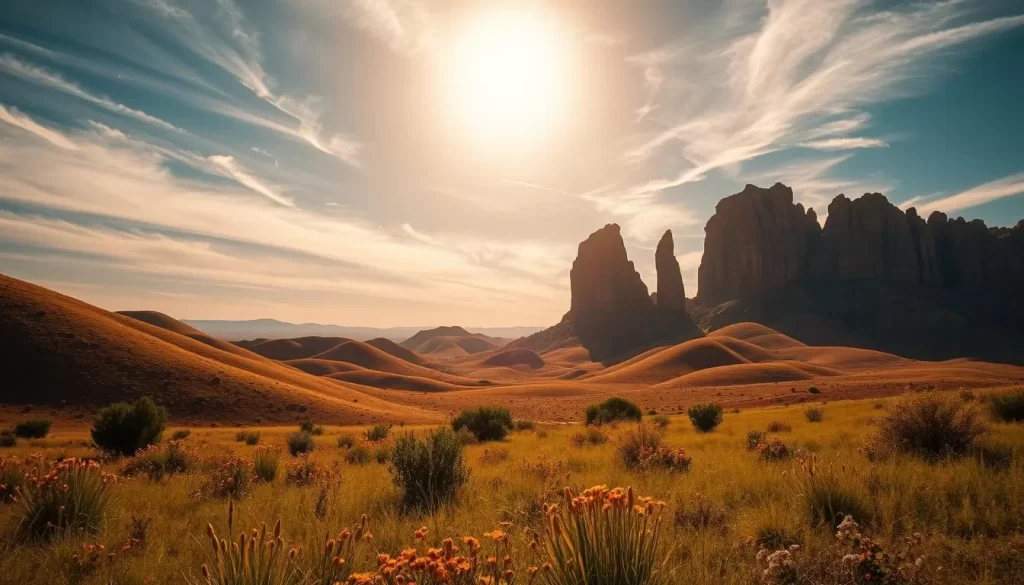
April to June: Rising Temperatures
As the dry season progresses, temperatures continue to rise, often exceeding 40°C (104°F) in April. May and June are the hottest months of the year, with temperatures regularly surpassing 45°C (113°F) in many regions. The extreme heat and dry conditions make outdoor activities challenging during this period.
July to September: Rainy Season
July marks the beginning of the rainy season, bringing relief from the heat but introducing challenges related to humidity and rainfall. August is typically the wettest month, with heavy rainfall potentially causing flooding. By September, the rainfall decreases, and temperatures become more manageable, making it a good time to visit before the dry season sets in.
Regional Weather Variations Across Niger
As you travel across Niger, you’ll encounter a range of climates and weather conditions due to its vast territory. The country’s diverse geography plays a crucial role in shaping its regional weather patterns.
Northern Desert Regions
The northern desert regions, including the Air Mountains and Ténéré Desert, are known for their extreme temperature fluctuations. Daytime temperatures can soar above 45°C (113°F), while nighttime temperatures can drop below 10°C (50°F). These areas receive minimal rainfall, making them accessible year-round, but the extreme heat from April to June can make travel uncomfortable.
Southern Savanna Areas
In contrast, the southern savanna areas, including the capital Niamey and the Niger River valley, experience a more pronounced wet season. Significant rainfall from June to September transforms the landscapes from dusty plains to lush greenery. While these regions have more moderate temperature variations, the pre-rainy season months (April-May) can still be extremely hot.
| Region | Climate Characteristics | Best Travel Time |
|---|---|---|
| Northern Desert | Extreme temperature fluctuations, minimal rainfall | Cooler months (November to February) |
| Southern Savanna | Pronounced wet season, moderate temperature variations | Early dry season (October to November) |
Cultural Festivals and Events by Season
Immerse yourself in Niger’s rich cultural traditions by attending one of its many festivals and events. The country’s diverse ethnic heritage is showcased through various celebrations throughout the year, often tied to seasonal patterns.
Gerewol Festival and Other Cultural Celebrations
The Gerewol Festival, a significant cultural event, typically occurs in September after the rainy season. During this colorful festival, Wodaabe men adorn themselves with elaborate makeup and costumes, performing traditional dances accompanied by rhythmic music to attract potential wives. Another notable event is the Cure Salée (Salt Cure) festival, which takes place in September in Ingall, featuring camel races, music, and traditional ceremonies.
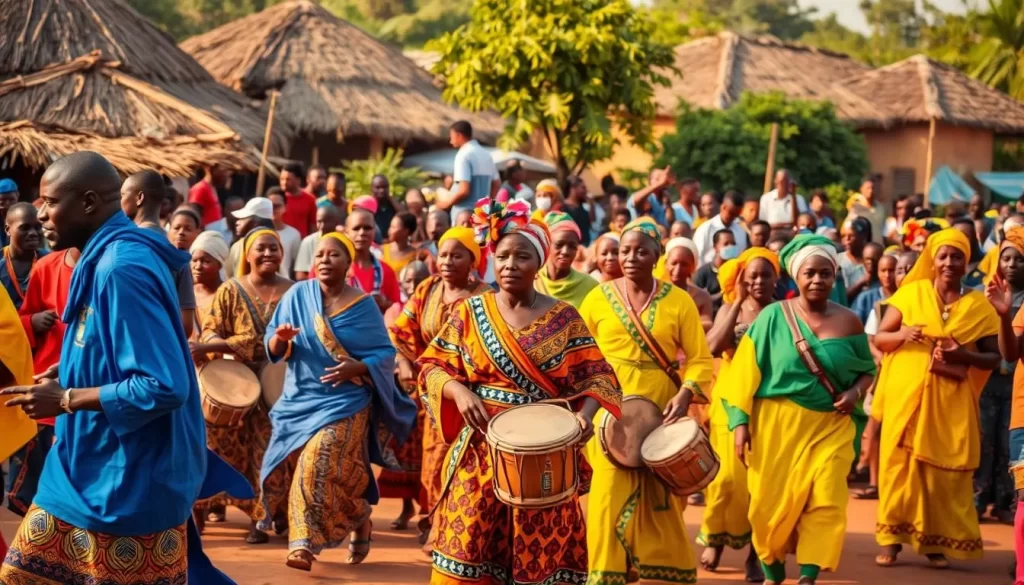
Religious Holidays and Observances
Niger’s cultural calendar is also marked by religious holidays, including Eid al-Fitr and Eid al-Adha, which follow the Islamic lunar calendar. These events are celebrated throughout Niger with special prayers, feasts, and family gatherings, offering a glimpse into the local culture and traditions. The dry season months (November-February) often feature various local celebrations in villages across Niger, providing authentic insights into traditional life.
Best Times for Different Activities in Niger
The best time to visit Niger depends on the activities you have planned for your journey. Niger offers a diverse range of outdoor activities that thrive during certain periods, making it essential to plan your trip accordingly.
Wildlife Viewing and National Parks
Wildlife viewing is most rewarding during the late dry season, from February to April, when animals gather around remaining water sources in W National Park. This period provides a unique experience for visitors, with comfortable weather making every adventure enjoyable. You can expect to see a variety of wildlife, including elephants, lions, and giraffes.
- February to April: Optimal time for wildlife viewing
- W National Park: A prime location for spotting diverse wildlife
Desert Excursions and Cultural Experiences
The cooler dry season months, from November to February, offer the best time for desert excursions to iconic locations like the Ténéré Desert and the Air Mountains. You can enjoy comfortable daytime temperatures and stunning stargazing opportunities in the clear night skies. Cultural experiences, such as visiting traditional villages and markets, are also most comfortable during this period.
- November to February: Ideal period for desert excursions and cultural experiences
- Comfortable temperatures and clear skies enhance your experience
Practical Travel Tips for Each Season
Niger’s diverse climate requires careful planning to ensure a comfortable and enjoyable travel experience. Whether you’re visiting during the dry or wet season, being prepared is key to making the most of your trip.
Packing Essentials for Niger’s Climate
Packing the right clothing and gear is crucial for navigating Niger’s climate. For the dry season (October-May), include lightweight, breathable clothing that covers your arms and legs for sun protection, along with a wide-brimmed hat, high-SPF sunscreen, and polarized sunglasses. During the hottest months (April-June), focus on heat management with moisture-wicking fabrics, electrolyte supplements, and a reusable water bottle with a built-in filter.
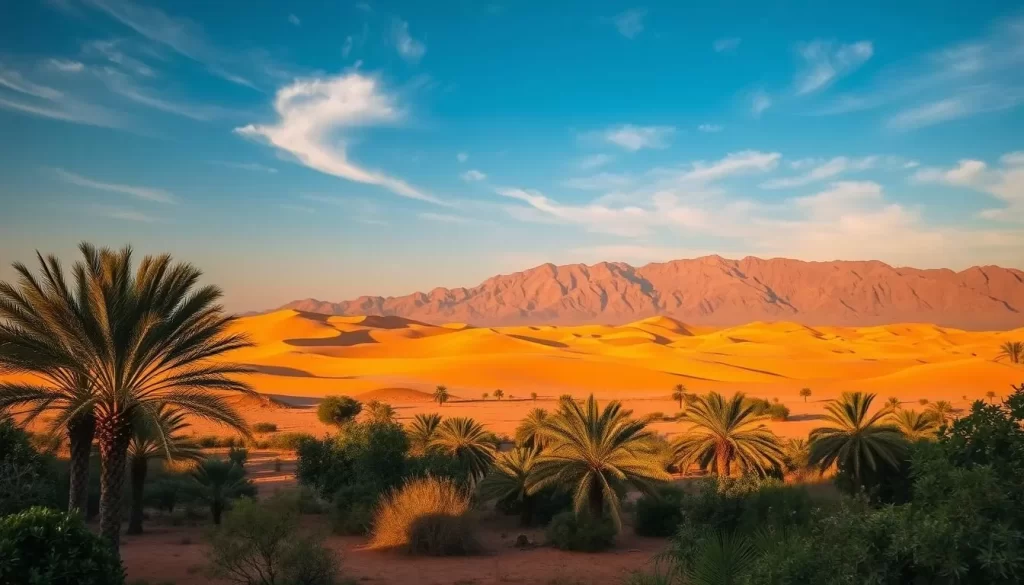
Health and Safety Considerations
Health considerations vary by season. During the dry season, vigilance against dehydration and heat-related illnesses is crucial. In contrast, the wet season brings an increased risk of water-borne diseases and malaria. Regardless of the season, it’s essential to take antimalarial medication, use insect repellent, and sleep under treated mosquito nets. Additionally, be mindful of seasonal road conditions that can impact travel plans, especially during the wet season when many rural roads become impassable.
Budget-Friendly Travel: High vs. Low Season
When planning your trip to Niger, understanding the difference between high and low travel seasons can significantly impact your budget. The country’s tourism industry experiences fluctuations throughout the year, affecting the costs of accommodations, tours, and other travel-related expenses.
Cost Variations Throughout the Year
The cost of traveling in Niger varies greatly depending on the season. During the high season, from November to February, accommodation prices can increase by 20-30% compared to the low season. In contrast, the wet season (June-September) represents the primary low season for tourism, offering significant discounts on accommodations, tours, and guide services.
| Season | Accommodation Prices | Tour Costs |
|---|---|---|
| High Season (Nov-Feb) | 20-30% higher | Higher |
| Low Season (Jun-Sep) | Up to 40% lower | Lower |
| Shoulder Season (Oct, Mar) | Reasonable | Competitive |
Finding the Best Deals
To travel Niger on a budget, consider visiting during the shoulder season (October and March) when costs are reasonable and weather conditions are acceptable. You can also look for deals during the early or late wet season (June or September) when rainfall is less intense but prices remain low. Many tour operators offer substantial discounts during the low season to attract travelers.
Conclusion: Planning Your Perfect Niger Adventure
Niger’s diverse climate and cultural events make timing your visit essential. To ensure a comfortable and rewarding travel experience, consider the weather conditions and seasonal events that align with your interests.
Your ideal time to visit should coincide with the activities you want to enjoy, whether it’s exploring the desert landscapes during the cooler months or witnessing the Gerewol Festival in September. The journey to Niger is filled with extraordinary cultural experiences and stunning landscapes, making it a unique trip.
Use this guide as a starting point for planning, and consult with local tour operators for the most up-to-date information on seasonal conditions and events to make the most of your time explore Niger.
The above is subject to change.
Check back often to TRAVEL.COM for the latest travel tips and deals.
